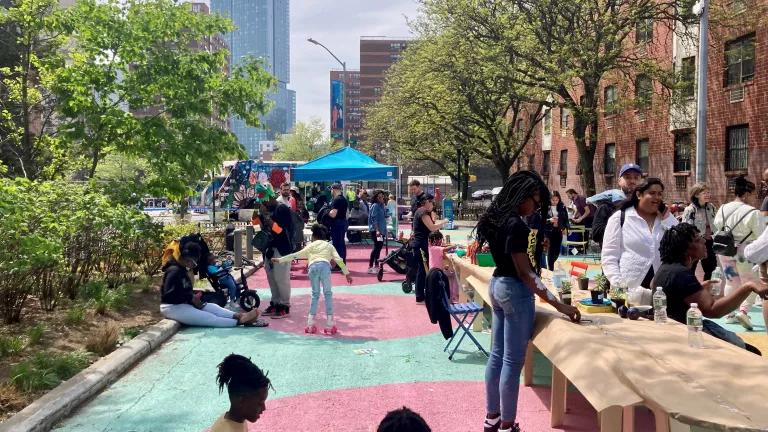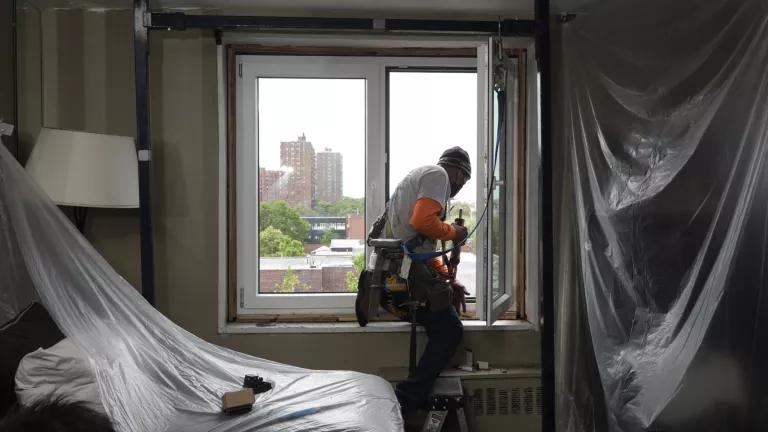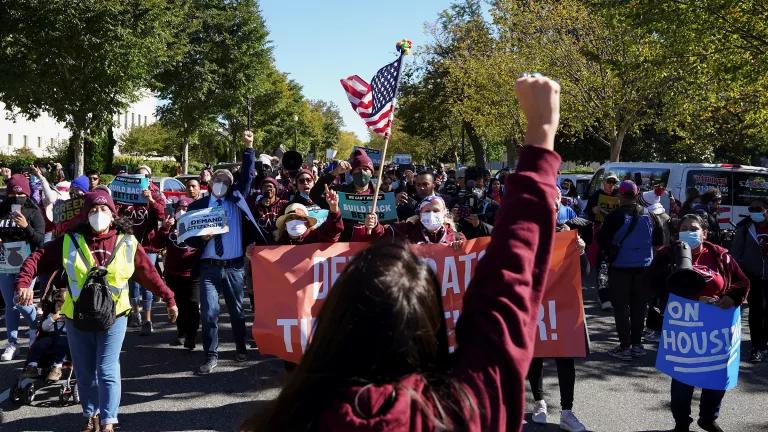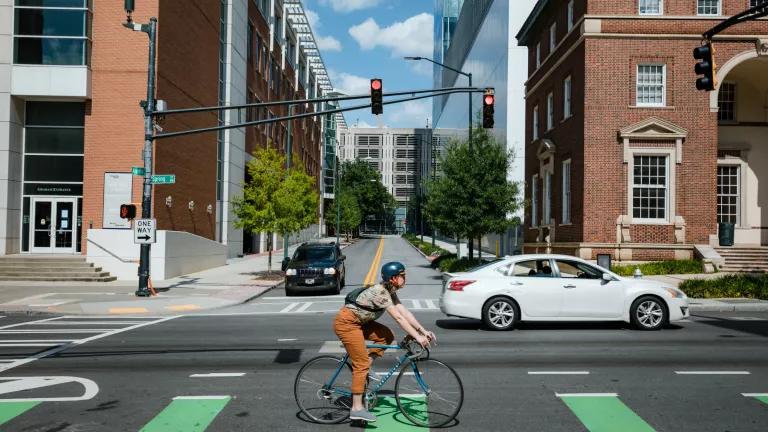Hungry for Local Action in New Climate Law? Start Here
Cities can tap into millions but may not know about it yet.

Community gathering in street space
I. Nielson
Anyone tracking the new climate funding from the Inflation Reduction Act can be forgiven for feeling lost trying to plug in locally. One new program, the Climate Pollution Reduction grants, launched by the Environmental Protection Agency, is the best starting point to engage with your community on climate priorities, right where you live. Here’s how it works.
The grant has two parts. First, EPA gives states $3 million each and the largest metro areas $1 million each to make a robust, community-informed plan for tackling climate change emissions. Then, with approved plans, state or local governments can apply to EPA’s $4.5 billion fund for grants that may exceed $100 million. These transformative investments in housing, transportation, food waste and renewable energy get us closer to a safer climate future. And it’s a much-needed bonus that EPA’s flexible funds for these blueprints can jumpstart local conversations for tapping the wider pool of federal climate funds.
Any funds that states rejected were reallocated to large metro areas. See EPA’s updated list of confirmed planning grants recipients here.
What's at Stake?
For Philadelphia residents, the new climate law provides much-needed resources to wrestle down high energy bills. A quarter of Philadelphia’s low-income residents have an energy burden over 18% which is three times higher than the national average. Energy burden measures the percentage of household monthly income spent on utility bills. Now with new planning grants, community-based organizations can work alongside city of Philadelphia staff using census track data to target neighborhoods with the highest energy burden, when Philadelphia applies for federal funding to make efficiency and electrification upgrades to housing.
Savvy states and cities will make plans to align federal funds. For example, a new program for affordable housing efficiency upgrades can tap the Climate Pollution Reduction Grant for program development. To reach a different segment of affordable housing or small business, a city could also work in alignment with local lenders using low-cost financing from the $20 billion EPA Greenhouse Gas Reduction fund. These same efficiency programs could also offer rooftop or community solar from the $7 billion in EPA Solar for All funds while using DOE’s rebates for efficiency and electrification.
The benefits add up. Investments in a beloved but well-worn community center, for instance, could dramatically cut its energy costs, provide back-up energy storage to cool elderly residents during a heatwave with blackouts, and host workforce training events for youth. This same community center could also use its large roof to host a community solar installation that offers low-cost solar subscriptions to dozens of renter households to save on their monthly power bills.
Who Is at the Table?
The Climate Pollution Reduction Grants requires a plan with meaningful community involvement. EPA requires stakeholder engagement specifically with representatives of disadvantaged communities and asks states and cities to analyze the benefits of proposed projects. It’s key that the funds are flexible and allow subgranting to non-profit partners and stipends for community participation at the planning table.

People sharing ideas on a whiteboard
Unsplash
As new infrastructure investments are poised to remake communities, we have a generational opportunity to reverse historic inequities. Some cities have experience making equitable climate programs that we need to tap during this new era of energy finance and tax law. The opportunity to benefit disadvantaged communities hinges on matching federal resources for climate projects with inclusive engagement.
And it’s a challenge to engage in a swift process. While EPA has created handy workplan tools to ease the lift, the first deadline for Priority Climate Action Plans is March 1, 2024. Without a doubt, these plans will be a clear and strong signal for how climate funds will be spent locally across the United States.
Sourcing It Locally
Cities have long been a sturdy backstop of climate change action against shifting federal winds. Local governments decide where new housing and transportation is built–making investments that deliver multiple benefits, such as jobs; clean air and water; and cleaner, greener schools, hospitals and community centers.
The new climate and infrastructure laws mostly deliver funds to state governments. States have discretion to design programs like the energy and electrification rebates. Savvy states, like Minnesota, have installed IRA implementation czars to set up effective programs that cities can tap into. But many other states haven’t been as helpful for cities trying to tap into federal funding. The good news is that cities are eligible for dozens of different EPA, HUD, DOE and USDA grants. Yet the onus falls on plucky city staff and community partners to navigate. Where to start?
The Climate Pollution Reduction grants offer a welcome starting point -- and flexible funding -- for communities to set an inclusive table for this important work ahead.



